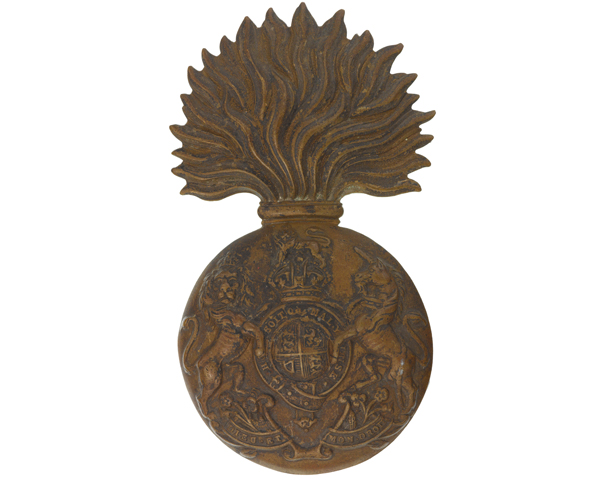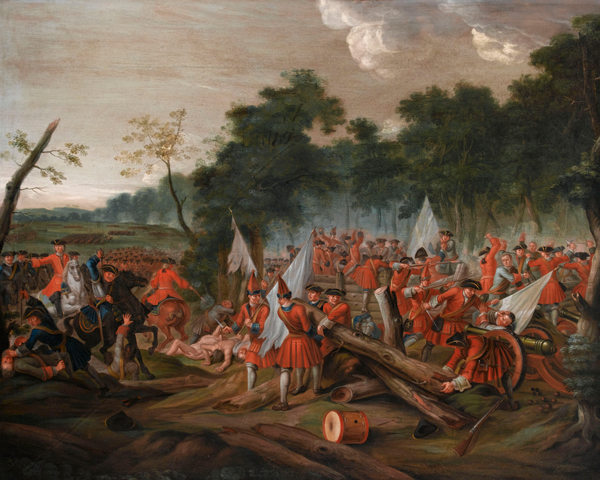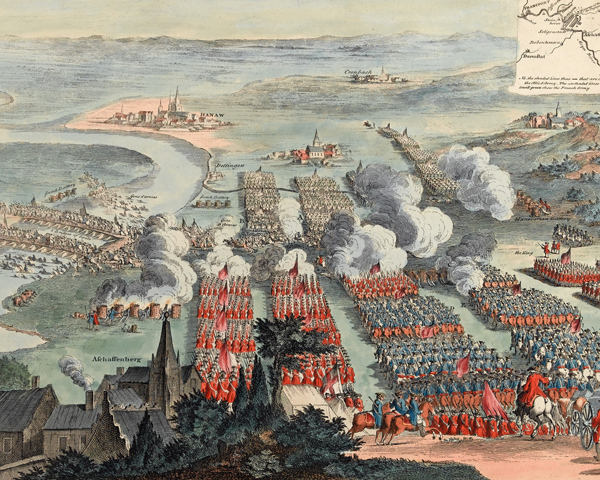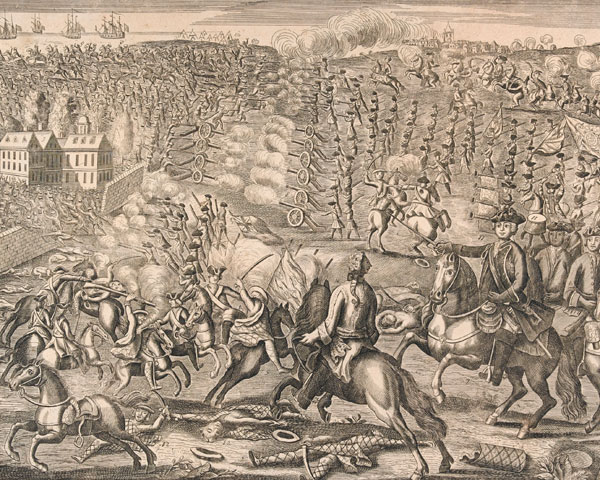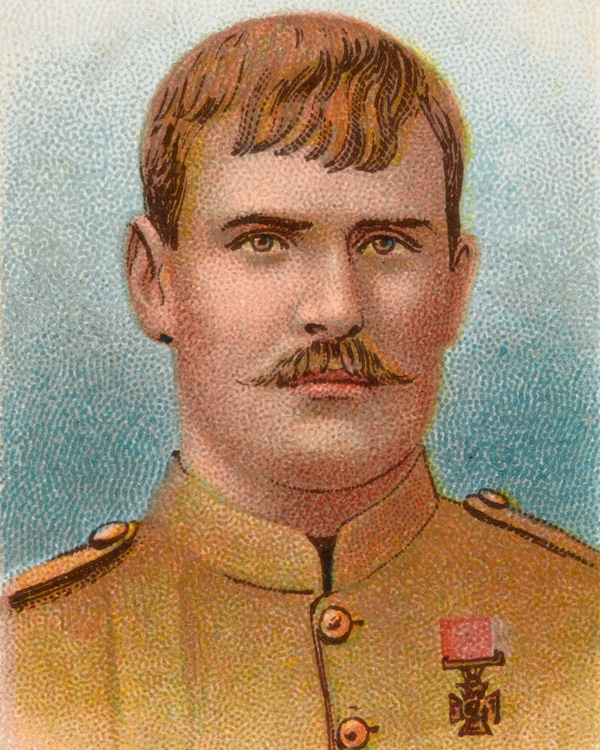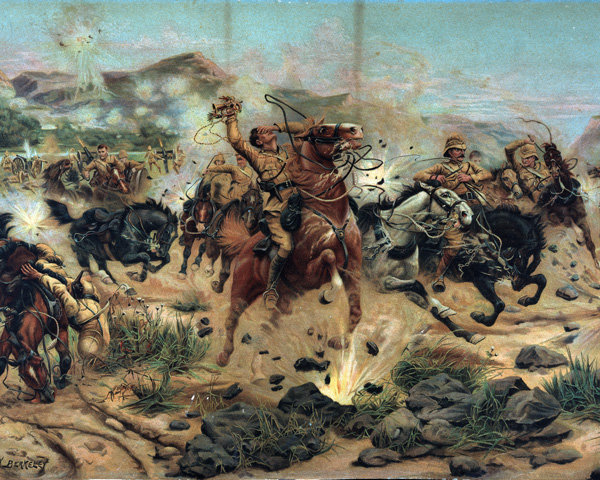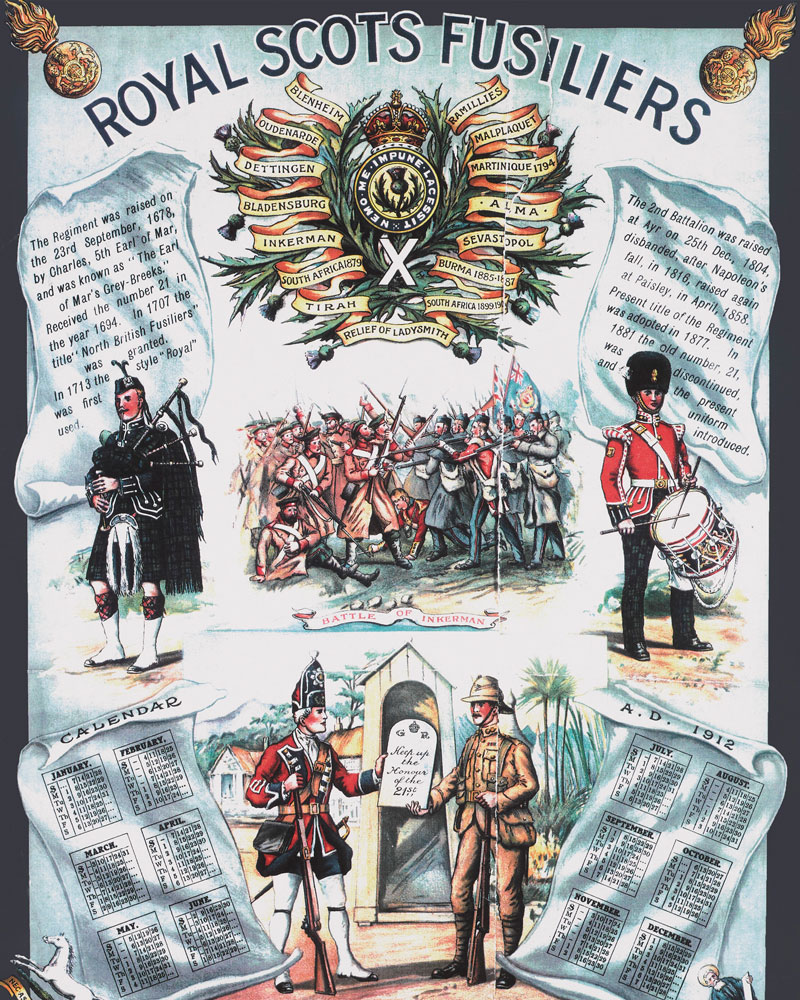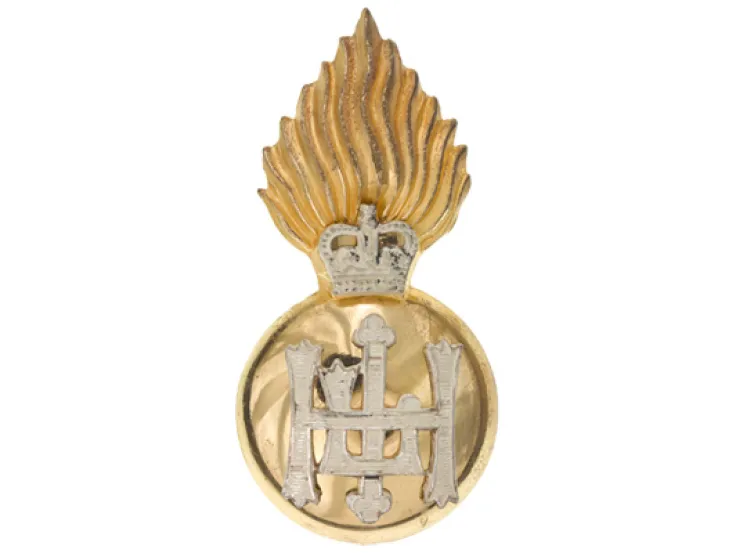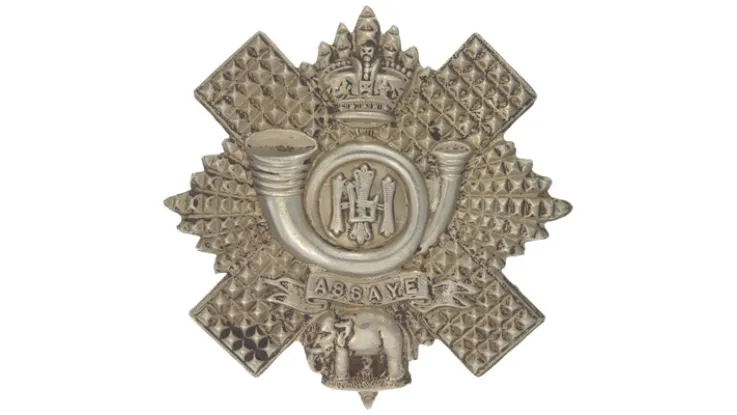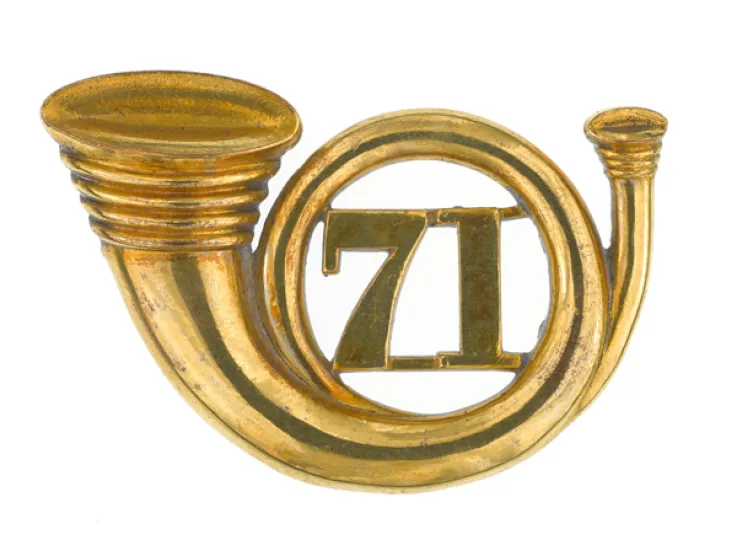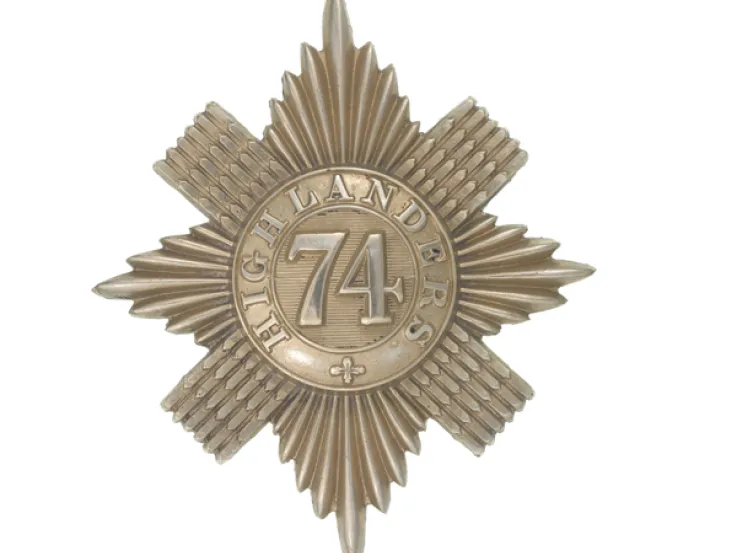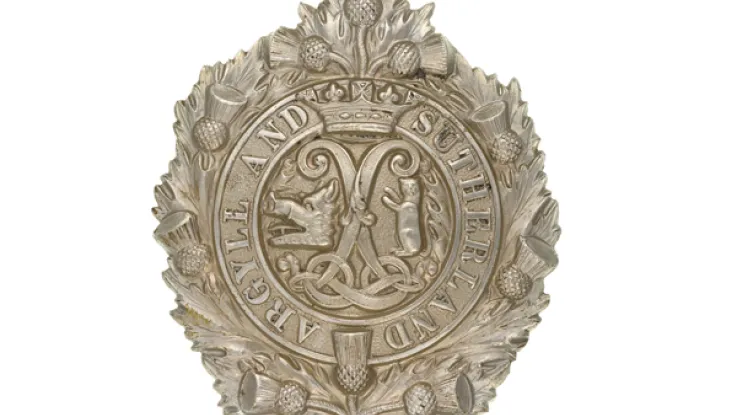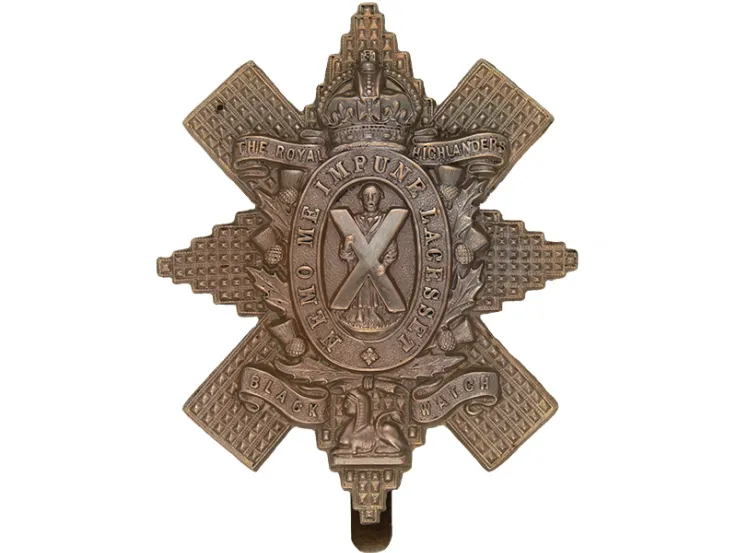Origins
In 1662, the recently-restored King Charles II tried to re-impose governance by bishops on the Scottish church, leading to major agitation among Presbyterian or Covenanter Scots. In September 1678, Charles Erskine, Earl of Mar, raised a regiment to help put down this unrest.
In 1685, it became a fusilier regiment, a distinction given to elite troops armed with the new flintlock musket, or 'fusil’. Three years later, it was moved from the Scottish to the English establishment.
The regiment initially refused to support William of Orange in his coup against his father-in-law, King James II. But it went over to William's side after James fled from Britain in December 1688. During the Nine Years War (1689-97), it fought in Flanders at Mons (1691), Steenkirk (1692) and Landen (1693).
18th century
During the War of the Spanish Succession (1702-13), it returned to the Continent, fighting at Schellenberg (1704), Blenheim (1704), Ramillies (1706), Oudenarde (1708), Lille (1708) Malplaquet (1709), Douai (1710) and Bouchain (1711).
The ‘Scots’ in its title was changed to ‘North British’ from 1707 to encourage common British feeling after the Acts of Union.
In 1715, it fought against the Jacobite rebellion, including at the Battle of Sheriffmuir (1715). Next, during the War of the Austrian Succession (1740-48), it served at Dettingen (1743), Fontenoy (1745) and Lauffeld (1747).
In between these battles, it returned home to fight at Culloden (1746) during another Jacobite Rebellion (1745-46). Then, in 1751, it was given the numeral 21 in the order of precedence.
During the Seven Years War (1756-63), it took part in raids on the French coast, including Belleisle (1761), before moving to North America.
During the American War of Independence (1775-83), the regiment served at Quebec (1775). But, after surrendering at Saratoga (1777), it was interned for the rest of the conflict.
Revolutionary and Napoleonic Wars
The regiment fought on Martinique (1794) and Guadeloupe (1794) in the West Indies during the French Revolutionary Wars (1793-1802), before putting down a rebellion in Dublin in 1803.
In 1804, it raised a 2nd Battalion, which served in Scotland, Ireland and the Netherlands during its 12-year lifespan, including the Siege of Bergen op Zoom (1814).
Meanwhile, 1st Battalion guarded the English coast from invasion in 1805, before being sent to the Mediterranean, serving in Sicily (1806), Egypt (1807), and Italy (1813). Its grenadier company also served on the coast of Spain in 1812. Then, in 1814, the whole of 1st Battalion was sent to fight in the War of 1812 (1812-15).
The regiment’s duties in the next three decades included occupation duty in France, garrison duty in the West Indies and Ireland - guarding convicts bound for Australia - and service in India.
Victorian wars
During the Crimean War (1854-56), the 21st fought at the Alma (1854), Inkerman (1854) and Sevastopol (1854-55).
It formed a new 2nd Battalion in 1857. Both battalions spent the next 20 years in garrisons across the British Empire. In 1877, it was renamed the 21st (Royal Scots Fusiliers) Regiment of Foot.
2nd Battalion fought in South Africa during the Zulu and Sekukuni Wars of 1879. Two years later, it became the county regiment for six counties in south and south-west Scotland.
The regiment wasn't merged with any other units during the 1881 reforms as it already had a second regular battalion. This period also saw 2nd Battalion fight in the Transvaal War (1880-81) and the Third Burma War (1885-87), while 1st Battalion garrisoned India, Britain and Ireland.
India and South Africa
2nd Battalion fought in the 1888 Hazara Expedition on the North-West Frontier of India. Then, both battalions fought in the 1897 Tirah Expedition.
1st Battalion spent the next 17 years in India and South Africa, while 2nd Battalion served during the Boer War (1899-1902), fighting at Colenso (1899), the Relief of Ladysmith (1900) and several other battles, before returning to Britain in 1903.
World Wars
Both battalions remained on the Western Front throughout the First World War (1914-18). The regiment also raised eight Territorial and four New Army battalions. These served at Gallipoli, Salonika, on the Western Front and at home stations.
1st Battalion spent the inter-war period in Ireland, Britain, Palestine and India. 2nd Battalion was meanwhile in the Black Sea region during the Russian Civil War (1917-22), then in India, China and Britain.
During the Second World War (1939-45), 2nd Battalion was evacuated from France in June 1940 along with the Territorial 4/5th and 6th Battalions. Both regular battalions also served in Madgascar in 1942. They then split, with 1st Battalion spending the rest of the war in India and Burma, fighting in the Arakan and the advance on Mandalay.
2nd Battalion fought in Persia (now Iran) and Iraq (1942-43), and Sicily and Italy (1943-44), including the Battle of Anzio (1944) during the latter campaign. In February 1945, it deployed to North West Europe to take part in the invasion of Germany.
Post-war
The regiment was reduced to a single regular battalion in 1948. It garrisoned Germany, before deploying to the Malayan Emergency (1948-60) for three years in 1954. Its final independent overseas deployment was to Cyprus in 1958.
Legacy
In 1959, the regiment amalgamated with The Highland Light Infantry to form The Royal Highland Fusiliers (Princess Margaret’s Own Glasgow and Ayrshire Regiment).
Regimental museums
The National Army Museum works with a network of Regimental and Corps Museums across the UK to help preserve and share the history and traditions of the Army and its soldiers.
Discover more about The Royal Scots Fusiliers by visiting The Royal Highland Fusiliers Museum in Glasgow.


